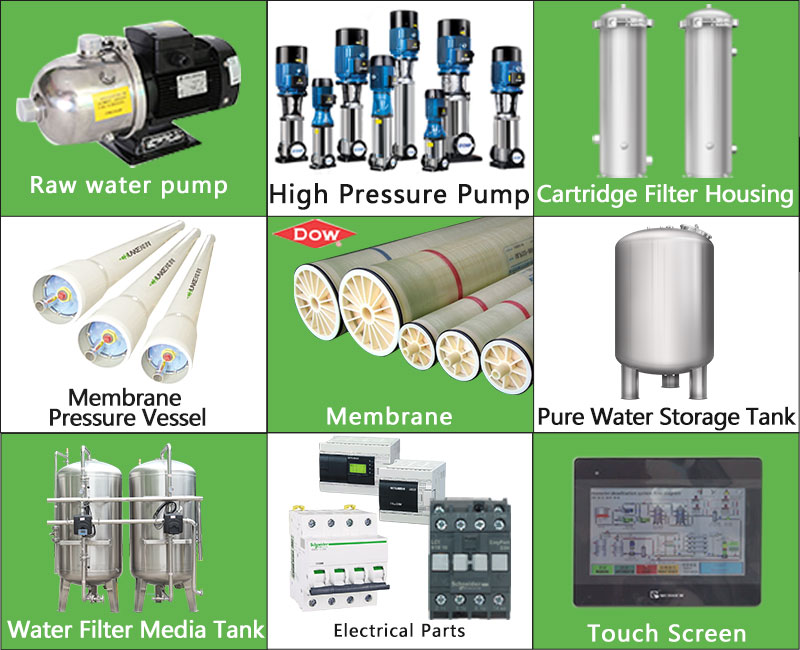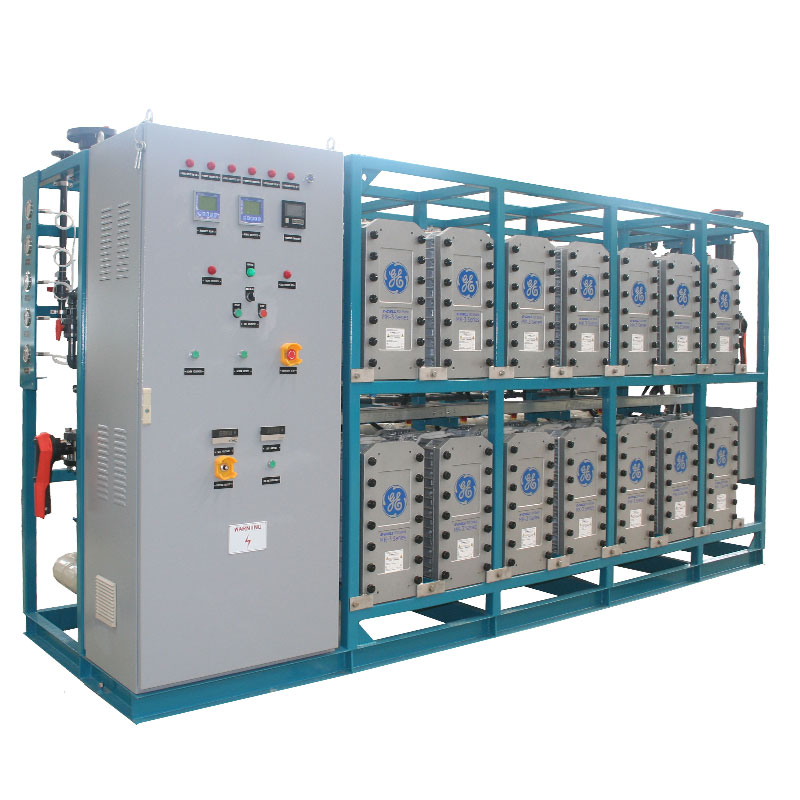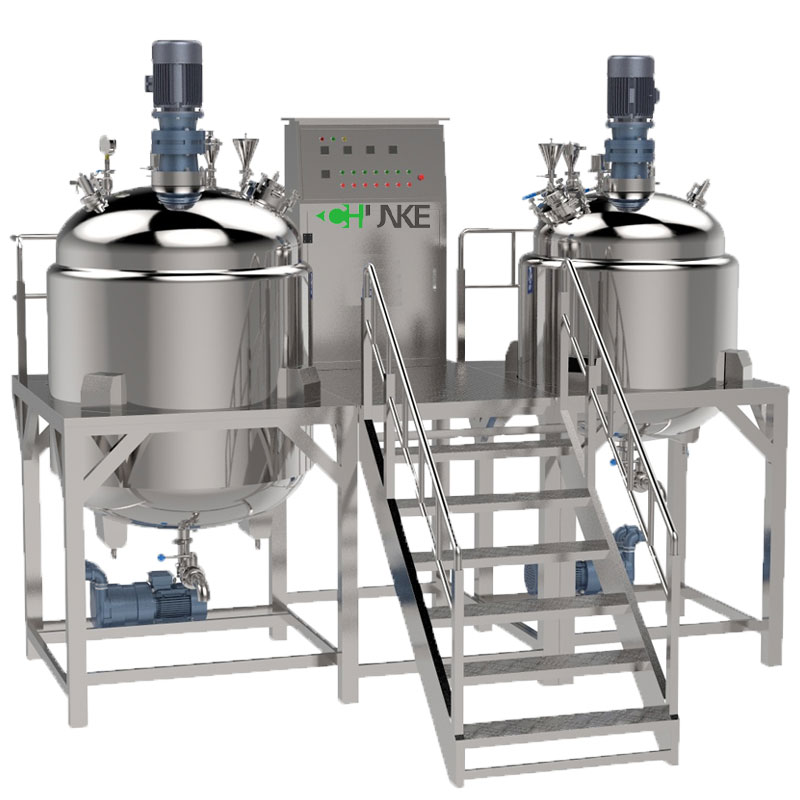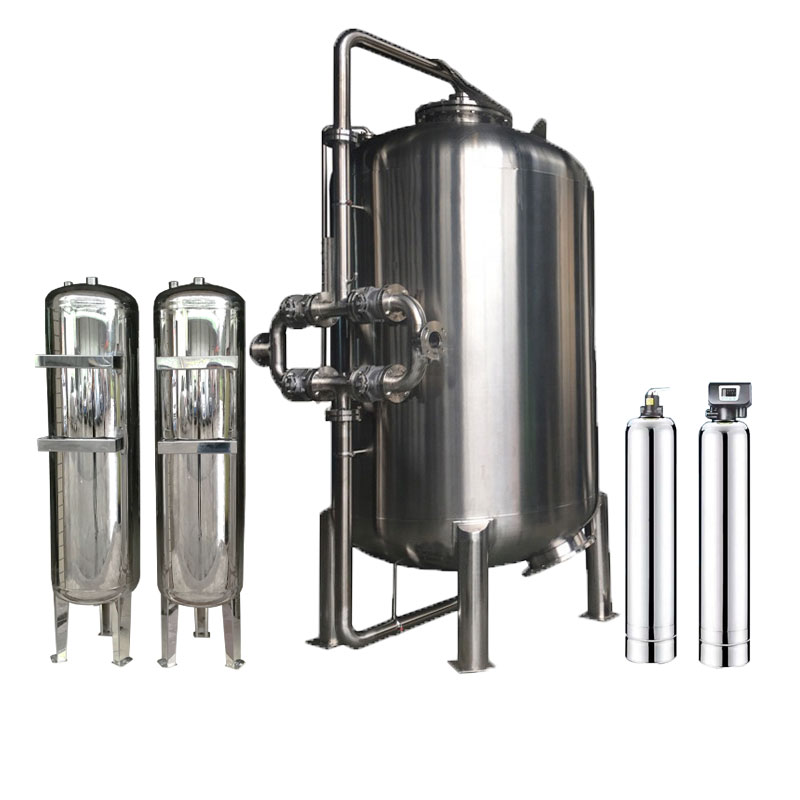Is the water filtered by all filters as good as water from reverse osmosis?
As water safety issues become increasingly prominent, the demand for water purification in homes and industries is gradually increasing. Various types of water filters are emerging in the market. However, do different filters have the same filtering effect as water treated by reverse osmosis (RO) systems? This is a question that many consumers and companies often ask when choosing water purification equipment.
This article will explore the principles, advantages and disadvantages of various filters, and their comparison with reverse osmosis technology.

Different types of filters and how they work
Activated carbon filter:
Activated carbon filter is one of the most common household water filtration devices. It uses the strong adsorption capacity of activated carbon to remove organic matter, chlorine and its byproducts, odors and some heavy metals in water. Activated carbon adsorbs pollutants in water on the filter material through its rich pore structure on the surface, thereby achieving a purification effect.
Mechanical filter:
Mechanical filters mainly remove particulate matter and suspended matter in water through physical blocking. Its filtration accuracy depends on the pore size of the filter material, usually with specifications such as 1 micron, 5 microns, and 10 microns. This filter is commonly used in primary water treatment and can effectively remove larger materials such as silt and rust, but it cannot remove soluble pollutants.
Ultraviolet sterilizer:
Ultraviolet sterilizer uses the bactericidal ability of ultraviolet rays to destroy the DNA structure of microorganisms in the water, thereby making them lose their ability to reproduce. Ultraviolet disinfection does not change the chemical properties of water, so it does not affect the taste or composition of water, but it cannot remove chemical pollutants, heavy metals or soluble organic matter.
Ion exchange filter:
This filter is usually used to soften water quality. It replaces calcium and magnesium ions in water with sodium ions or hydrogen ions through ion exchange resin to reduce the hardness of water. Ion exchange filters are effective in removing soluble inorganic salts in water, but are ineffective against organic matter, bacteria or viruses.
Ultrafiltration (UF) filter:
Ultrafiltration filters use ultrafiltration membranes for filtration. The membrane pore size is usually between 0.01-0.1 microns, which can remove most bacteria, viruses, colloids and large particles of organic matter. Ultrafiltration technology has a good removal effect on large molecules in water, but has limited removal ability for soluble ions and small molecules.

How does a reverse osmosis filter work?
Reverse osmosis filters are a highly sophisticated water purification technology that effectively removes almost all impurities in water through a reverse osmosis membrane. The pore size of the reverse osmosis membrane is extremely small, about 0.0001 microns, which enables it to filter out most dissolved solids, heavy metals, chemical pollutants, bacteria, viruses, etc. in the water. Due to the extremely small pore size of the reverse osmosis membrane, almost all dissolved substances in the water, such as sodium, potassium, fluoride, nitrate, etc., are intercepted. In contrast, activated carbon filters, mechanical filters, and ultrafiltration membranes cannot achieve such precision, so reverse osmosis systems have unparalleled advantages in removing dissolved pollutants.
Reverse osmosis systems can effectively remove many types of pollutants, including heavy metals (such as lead and mercury), radioactive elements, bacteria, viruses, and most organic compounds. Other filters usually only remove specific categories of pollutants, while reverse osmosis systems can fully purify water and provide extremely high water purity. Because reverse osmosis systems can remove almost all impurities, including minerals and chemical residues in water, they can significantly improve the taste and clarity of water. Many users report that RO water is purer and tastes better than water treated with regular filters.

Comparison of filtration results: RO water vs. water treated with other filters
While many filters perform well in removing contaminants from water, they differ significantly from RO systems in terms of accuracy and range of filtration.
Removal rate differences:
RO systems typically have removal rates above 90%, and can even reach 99% for some contaminants. Mechanical filters, activated carbon filters, and ultrafiltration systems typically have lower removal rates, especially for dissolved substances and small organic molecules. While these filters can improve water quality, they do not provide the same purity as RO water.
Treatment range:
RO systems have a broad spectrum of treatment capabilities and can remove almost all types of contaminants. Other filters are often designed for specific types of contaminants, such as activated carbon for organic matter and chlorine, ultraviolet light for microorganisms, and mechanical filters for only suspended particles. Although the combination of different filters can improve treatment results, it is still difficult to achieve the full purification capabilities of RO systems.
Applicable scenarios:
Reverse osmosis systems are suitable for occasions that require highly pure water, such as laboratories, pharmaceutical industries, semiconductor manufacturing, and household drinking water. Other types of filters are more used for primary treatment, removal of specific pollutants, or environments with low water quality requirements. In most cases, household water only needs to be filtered through simple mechanical or activated carbon filtration to meet the needs, but for users with higher requirements for water quality, reverse osmosis systems are still the most reliable choice.

What are the limitations of reverse osmosis systems?
Although reverse osmosis systems perform well in water purification, they are not perfect and have some limitations that need to be considered. Reverse osmosis systems produce a certain amount of wastewater during the filtration process, usually 3-4 times the amount of water treated. This means that homes or businesses using reverse osmosis systems need to deal with a large amount of wastewater, which may increase water use costs and the burden of wastewater treatment.
Due to the high efficiency of reverse osmosis membrane filtration, natural minerals in water (such as calcium and magnesium) are also removed. Although this improves the purity of the water, it also means that beneficial trace elements in the water are filtered out. Therefore, some users may need to supplement these minerals or choose to install mineral return equipment after the reverse osmosis system. In addition, the initial installation cost of the reverse osmosis system is high, and the filter element and membrane need to be replaced regularly to maintain good filtration effect. In contrast, ordinary activated carbon filters and mechanical filters are cheaper and simpler to maintain. Therefore, for families or businesses with limited budgets, reverse osmosis systems may not be the best choice.

Conclusion
In general, although all filters can improve water quality to some extent, their filtration effects are significantly different compared with reverse osmosis systems. Due to its excellent filtration accuracy and broad-spectrum removal ability, reverse osmosis systems can provide water purity far exceeding other filters. Therefore, for occasions that require highly purified water, such as domestic drinking water, laboratory water, and industrial production, reverse osmosis systems are undoubtedly the best choice.
However, when faced with lower water quality requirements or specific pollutant removal, other types of filters still have their unique advantages. Therefore, choosing a suitable water treatment system should be comprehensively considered based on specific needs, budget, and water quality requirements.




